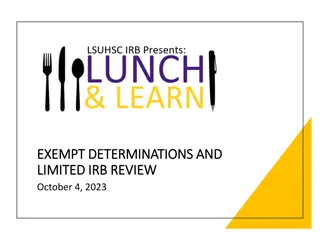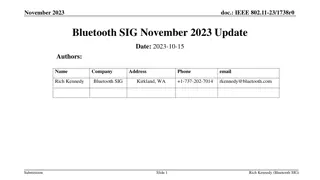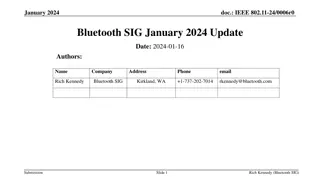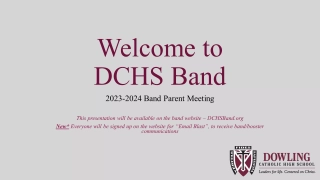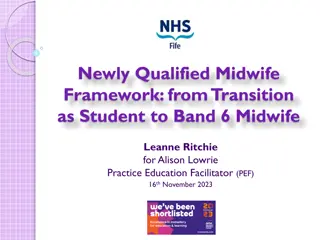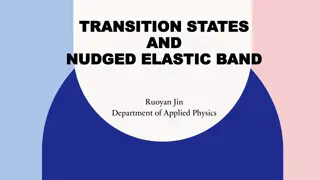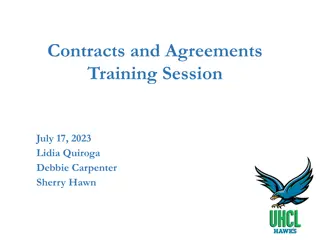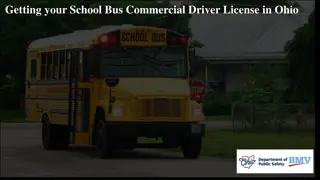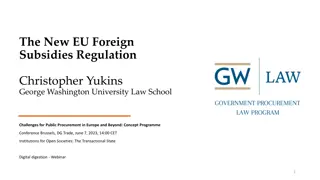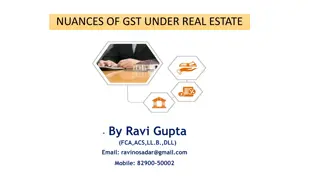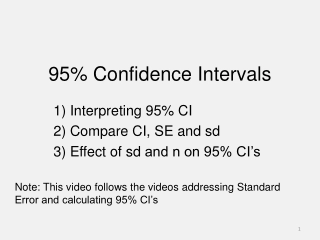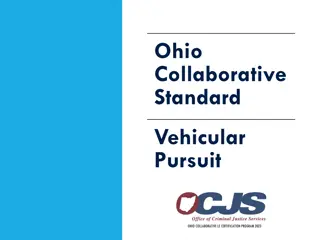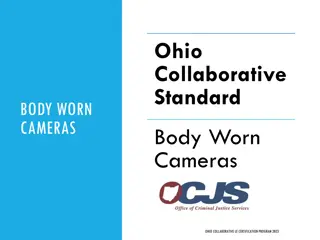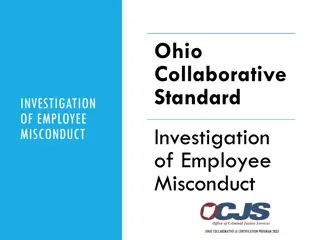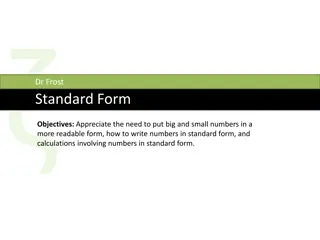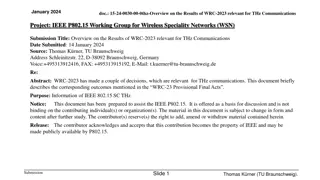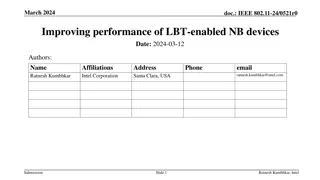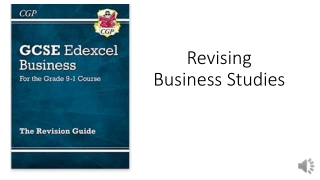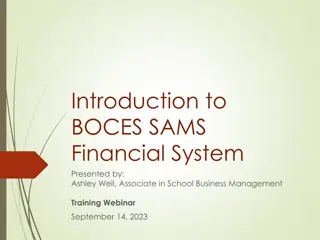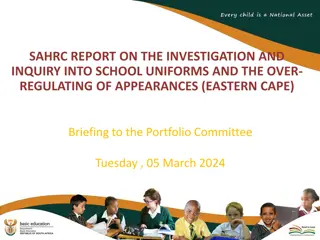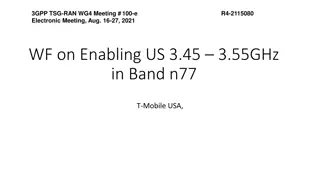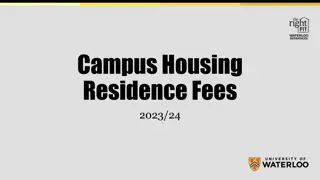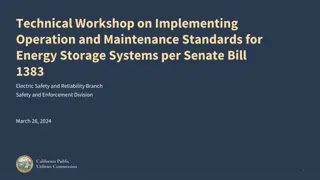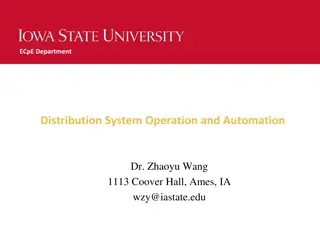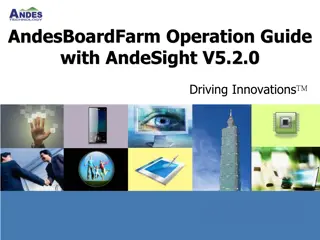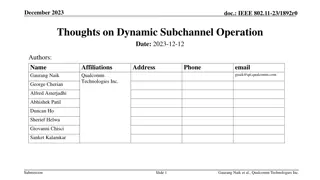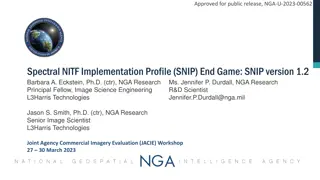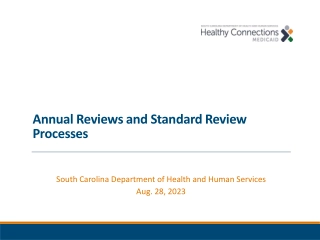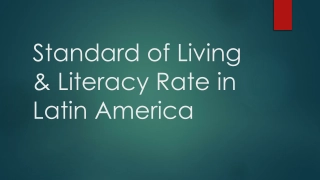Revising ETSI Standard for License-Exempt Operation in 6 GHz Band
Work has commenced on revising the ETSI standard EN 303.687 for license-exempt operation in the 6 GHz band to expedite completion. This revision project outlines the history, New Work Item approval, ETSI processes, and the upcoming steps. It traces back to 2017 when Switzerland and ECC administrations proposed studying technical conditions for expanding spectrum for wireless internet in the 6 GHz band. Subsequent mandates led to the development of technical and regulatory frameworks, culminating in the publication of EN 303.687v1.1.1 in June 2023. The journey from inception to publication highlights the collaborative efforts and regulatory processes involved.
Download Presentation
Please find below an Image/Link to download the presentation.
The content on the website is provided AS IS for your information and personal use only. It may not be sold, licensed, or shared on other websites without obtaining consent from the author. Download presentation by click this link. If you encounter any issues during the download, it is possible that the publisher has removed the file from their server.
Presentation Transcript
doc.: IEEE 802.11-24/0019r0 January 2024 Revising ETSI EN 303 687 Date: 2024-01-16 Authors: Name Company Address Phone email Rich Kennedy Bluetooth SIG Kirkland, WA +1-737-202-7014 rkennedy@bluetooth.com Submission Slide 1 Rich Kennedy (Bluetooth SIG)
doc.: IEEE 802.11-24/0019r0 January 2024 Abstract Work has begun on the next revision of the ETSI standard for license-exempt operation in the 6 GHz band, EN 303 687. This document looks at ways to minimize the time to completion of this four-part New Work Item. Submission Slide 2 Rich Kennedy (Bluetooth SIG)
doc.: IEEE 802.11-24/0019r0 January 2024 Agenda History of the standard The approved New Work Item The ETSI Processes Revision as an engineering project Next Steps Submission Slide 3 Rich Kennedy (Bluetooth SIG)
doc.: IEEE 802.11-24/0019r0 January 2024 History It all started in 2017, when Switzerland, along with nine other ECC administrations, proposed to study technical conditions under which additional spectrum in the 6 GHz band could be opened up for wireless internet. The ECC assigned the work to two newly created groups. The SE45 project team, under the chairmanship of OFCOM, was tasked with developing the technical conditions under which these frequencies could be used by RLAN devices without interfering with existing services in this band (Fixed Service and Fixed Satellite Service). The FM57 regulatory project team had to translate the technical results into regulatory conditions that would apply in CEPT member countries. Shortly after the work began, the European Commission (EC) issued a formal mandate to the ECC to undertake these studies. Through this process, the EC decisions taken at the end of the work become legally binding for the 27 EC Member States. - Ivica Stevanovic, Radio Spectrum Engineer at Federal Office of Communications OFCOM Submission Slide 4 Rich Kennedy (Bluetooth SIG)
doc.: IEEE 802.11-24/0019r0 January 2024 History [2] On 19 December 2017, in order to identify additional spectrum for WAS/RLANs, the Commission issued, pursuant to Article 4(2) of Decision No 676/2002/EC of the European Parliament and of the Council(5), a mandate to the European Conference of Postal and Telecommunications Administrations ( CEPT ) to study the feasibility of, and identify harmonised technical conditions for, the use of WAS/RLANs in the 5 925-6 425MHz frequency band for the provision of wireless broadband services. Working Groups SE45 and FM57 established to study the impact on incumbents ECC Report 316, CEPT Reports 73 and 75 document the project EN 303 687v1.1.1 was published in June of 2023. From November 2017 to approval and publication took 5 years and 7 months; the ECC process took 3 years and 7 months; the work on the standard began in September of 2021 Publication in the Official Journal of the European Union still in process Submission Slide 5 Rich Kennedy (Bluetooth SIG)
doc.: IEEE 802.11-24/0019r0 January 2024 The Very Low Power Provisions Parameter Technical Conditions Note 1: The mean e.i.r.p. refers to the e.i.r.p. during the transmission burst which corresponds to the highest power, if power control is implemented. Indoors and outdoors. Use on Unmanned Aircraft Systems (UAS) is not permitted The VLP device is a portable device 5 945-6 425 MHz Permissible operation Category of device Frequency band Note 2: Narrowband (NB) devices are devices that operate in channel bandwidths below 20 MHz. NB devices also require a frequency hopping mechanism based on at least 15 hop channels to operate at a value of in-band power spectral density (PSD) above 1 dBm/MHz. Maximum mean e.i.r.p. for in-band emissions (note 1) Maximum mean e.i.r.p. density for in-band emissions (note 1) Narrowband usage maximum mean e.i.r.p. density for in-band emissions (note 1) (note 2) Maximum mean e.i.r.p. density for out-of-band emissions below 5 935 MHz (note 1) 14 dBm 1 dBm/MHz Note 3: The appropriateness of this limit shall be subject to review by 31 December 2024. In the absence of justified evidence, a value of -37 dBm/MHz shall apply from 1 January 2025 10 dBm/MHz - 45 dBm/MHz until 31 December 2024 (note 3) Techniques to access spectrum and mitigate interference that provide an appropriate level of performance to comply with the essential requirements of Directive 2014/53/EU shall be used. Where relevant techniques are described in harmonised standards or parts thereof the references of which have been published in the Official Journal of the European Union in accordance with Directive 2014/53/EU, performance at least equivalent to the performance level associated with those techniques shall be ensured. Submission Slide 6 Rich Kennedy (Bluetooth SIG)
doc.: IEEE 802.11-24/0019r0 January 2024 CEPT Report 75 ANNEX 1: PROPOSED HARMONISED TECHNICAL CONDITIONS Submission Slide 7 Rich Kennedy (Bluetooth SIG)
doc.: IEEE 802.11-24/0019r0 January 2024 ETSI BRAN New Work Item Provisions (1) To develop a channel access mechanism for Narrowband Frequency Hopping equipment operation (2) To develop mechanisms enabling LPI client-to-client operations in accordance with ECC/DEC/(20)01 and EC Decision 2021/1067 on 6 GHz WAS/RLANs (3) To consider further development of FBE and LBE parameters for channel access mechanism (4) To consider inclusion of new channelization to support next generation technologies (bandwidths exceeding 160 MHz, e. g. 320 MHz) Submission Slide 8 Rich Kennedy (Bluetooth SIG)
doc.: IEEE 802.11-24/0019r0 January 2024 The EN 303 687 Revision Project The engineering work to develop the optimal conditions for license-exempt sharing with narrowband devices to be codified in EN 303 687 should be done with recognized best practices. Here is a proposal for a preliminary plan: 1. Define acceptable sharing, milestones and timelines* 2. Set goals for simulations and focus on achieving them a) SE45( 3. Optionally, to verify simulation results, test narrowband devices with 6 GHz radios a) Identify vendor(s) who can produce working models and support the effort b) Reach consensus agreement on a test plan c) Test and adjust parameters as necessary 4. Reach consensus on a final plan for the standard 5. Generate the draft text for EN 303 687 *If you don t know where you are going you might wind up someplace else Yogi Berra Submission Slide 9 Rich Kennedy (Bluetooth SIG)
doc.: IEEE 802.11-24/0019r0 January 2024 NOTES Submission Slide 10 Rich Kennedy (Bluetooth SIG)



